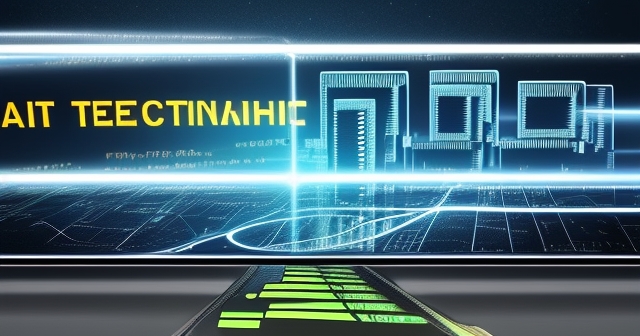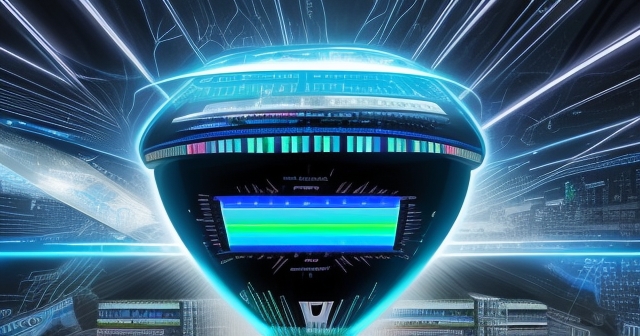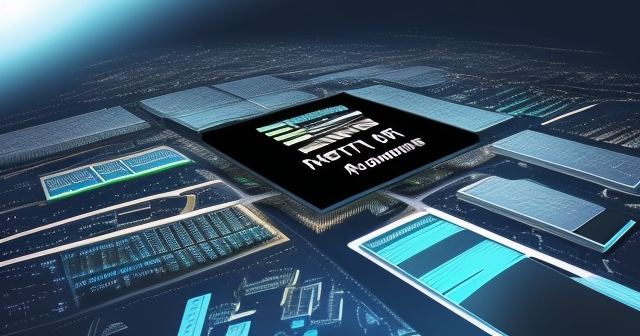The Rocky Road to NAND Consolidation: Decoding the Western Digital and Kioxia Merger Saga
The world of technology is constantly evolving, and few sectors demonstrate this dynamism better than the memory chip industry. Among the most critical components are NAND flash memory chips, the silent workhorses powering everything from your smartphone and laptop to massive data centers. As investors navigating this complex landscape, understanding the strategic maneuvers of major players is crucial. Today, let’s dive deep into one of the most talked-about, yet ultimately stalled, consolidation efforts in this space: the potential merger between Western Digital and Kioxia.
For years, these two giants have been engaged in a fascinating, on-again, off-again negotiation regarding their NAND flash memory businesses. It’s a saga driven by market pressures, strategic ambitions, and the intricate dance of powerful stakeholders. Why is this potential deal so significant? What were the forces pushing it forward, and what ultimately caused it to stall? And what does this mean for the future of the NAND market and these companies? Let’s explore this complex situation together, breaking down the layers so you can better understand the forces at play in this vital segment of the tech market.

The Strategic Imperative for Consolidation: Why Merge?
Think of the global NAND flash market as a competitive arena where a few large players vie for dominance. The undisputed leader is Samsung Electronics. Western Digital (WD) and Kioxia, while major players themselves, sit behind Samsung. Alone, they face significant pressure, particularly during market downturns. Now, imagine combining their forces. A merger of their NAND units would instantly create a powerhouse controlling approximately a third of the global NAND flash market, essentially achieving parity with Samsung.
This isn’t just about bragging rights or market share numbers on a spreadsheet. In the capital-intensive semiconductor industry, scale matters immensely. Combining operations allows for significant cost synergies – reducing overlapping expenses in manufacturing, research and development, sales, and administration. Here are several key points:
- A larger entity can negotiate better deals with suppliers.
- Increased operational efficiency can reduce production costs.
- Joint R&D efforts can lead to accelerated technological advancements.

Consider the context: The NAND market is notoriously cyclical. Periods of strong demand and high prices are often followed by periods of oversupply and price crashes, or what analysts call a “supply glut” and “market slump.” During these down cycles, margins shrink, and companies face significant financial strain. Consolidation is a common response in such industries to mitigate these effects, reducing the number of competitors and stabilizing supply. For WD and Kioxia, who already operate joint manufacturing facilities, a full business combination of their flash units seemed like a logical, perhaps even necessary, step to navigate these turbulent waters more effectively and ensure long-term profitability.

A Shared History: The Joint Venture Foundation
The potential merger wasn’t starting from scratch; it would have built upon a long-standing, operational relationship. Western Digital and Kioxia (formerly Toshiba Memory) have a history dating back years through a robust joint venture. They jointly operate significant NAND chip fabrication plants in Japan, particularly in Yokkaichi and Kitakami. These facilities are critical to their respective NAND production capacities.
Operating joint fabs means the two companies already share infrastructure, technology development in certain areas, and manufacturing processes. This existing collaboration provided a compelling foundation for a more complete business combination. It suggested that integrating the rest of their NAND businesses – including R&D, sales, marketing, and corporate functions – might be smoother than merging two completely disparate entities. The existing joint venture demonstrated a level of compatibility and shared operational understanding that could potentially ease the complexities typically associated with large-scale M&A in the tech sector.
| Joint Venture Facts | Details |
|---|---|
| Joint Operations Location | Yokkaichi and Kitakami, Japan |
| Joint Production Capacity | Critical to NAND production |
| Years of Collaboration | Multiple Years |
Think of it like two businesses that already share a factory floor and some engineering teams deciding to fully merge their operations. They’ve already worked out many of the logistical challenges and established communication channels. While merging entire companies is vastly more complex than running a joint venture, this shared history in core manufacturing was a significant factor making the potential deal strategically attractive. It presented a clear path to integrating physical assets and technical expertise, a key piece of the puzzle in a hardware-centric industry like semiconductor manufacturing.
The Complex Web of Stakeholders and Conflicts
Large corporate mergers are never simple transactions between just two companies. They involve a complex web of stakeholders, each with their own interests, influence, and potential points of conflict. In the case of Western Digital and Kioxia, this web includes major investors, former parent companies, and even competitors who are also investors. Navigating these relationships proved to be one of the most significant hurdles.
Key stakeholders in this saga include:
- Toshiba Corporation: Kioxia was originally the memory division of Toshiba. After financial difficulties, Toshiba sold a majority stake in 2018 to a consortium led by Bain Capital. However, Toshiba retained a significant stake (around 40.6% as of late 2023) and continued to have considerable influence over Kioxia’s strategic decisions.
- Bain Capital: As the leader of the consortium that acquired the majority stake, Bain Capital is the largest shareholder in Kioxia. Private equity firms like Bain are typically focused on maximizing the value of their investment, often through a sale (like an IPO or a merger) within a certain timeframe.
- SK Hynix: This is where things get particularly complicated. SK Hynix, a major South Korean memory chip manufacturer and a direct competitor to both Western Digital and Kioxia, was also part of the Bain-led consortium that invested in Kioxia. This dual role – investor in Kioxia and competitor to a combined WD/Kioxia – created a significant conflict of interest.
- Elliott Investment Management: An influential activist investor, Elliott Management has been a shareholder in Western Digital. Activist investors often push for strategic changes they believe will unlock value for shareholders, such as breaking up companies or selling off underperforming units. Elliott had actively advocated for WD to separate its flash memory business.
| Stakeholder | Influence |
|---|---|
| Toshiba Corporation | Significant influence due to retained stake |
| Bain Capital | Largest shareholder, focuses on maximizing value |
| SK Hynix | Investor and competitor, creates conflict of interest |
| Elliott Investment Management | Activist investor advocating for strategic changes |
Each of these players had a seat at the table, directly or indirectly, and their varied, sometimes conflicting, interests created significant friction points throughout the negotiation process. A deal couldn’t proceed without navigating and, ideally, aligning the interests of these powerful entities.
Deep Dive: SK Hynix’s Critical Opposition
While valuation discrepancies and regulatory hurdles played significant roles (which we’ll discuss shortly), the opposition from SK Hynix emerged as a particularly potent, and perhaps decisive, factor in the most recent stalling of merger talks in late 2023. Why was SK Hynix’s position so critical?
As mentioned, SK Hynix is not only a significant investor in Kioxia but also a direct competitor in the NAND flash market, being one of the top global suppliers. A merger between Western Digital and Kioxia would create a combined entity controlling roughly one-third of the market, directly challenging the market leadership position often held by Samsung and intensifying competition for SK Hynix itself.
SK Hynix reportedly raised concerns on multiple fronts. Firstly, they were worried about the potential impact of the merger on their investment value in Kioxia. The specific structure of a combined entity, the valuation assigned to Kioxia within that structure, and the future performance of the merged company could all affect the return on SK Hynix’s initial investment. Secondly, and perhaps more critically, they were concerned about the competitive implications. A stronger, more unified WD-Kioxia competitor could put pressure on SK Hynix’s own market share, pricing power, and profitability in the NAND sector. Effectively, SK Hynix was in a position where greenlighting the deal could potentially harm their core business operations, even if it theoretically benefited their investment in Kioxia.

Because of its significant stake and influence within the Kioxia investor group (reportedly having veto rights over certain strategic decisions), SK Hynix’s opposition carried substantial weight. Reports indicated that despite extensive negotiations and various proposed deal structures aimed at addressing concerns, SK Hynix remained unconvinced or unwilling to withdraw their objections. This inability to gain critical investor buy-in from a key competitor effectively put the brakes on the most recent attempt to finalize the merger.
Understanding this dynamic is key. It highlights the complex, sometimes contradictory, relationships that exist in highly consolidated industries like semiconductors. An investor might also be a rival, and their strategic decisions are influenced by both their financial stake and their operational competitive position.
Navigating Regulatory Mazes and Valuation Gaps
Beyond the intricate web of stakeholders, two other formidable challenges consistently plagued the merger talks: regulatory approvals and agreeing on a mutually acceptable valuation for the combined entity or the respective businesses.
Any merger of this scale, involving companies with significant global operations and market share, requires approval from antitrust regulators in multiple jurisdictions. Given the combined entity’s potential one-third share of the global NAND market, regulatory bodies in major markets like the United States, Europe, Japan, South Korea, and particularly China, would scrutinize the deal closely for potential anti-competitive impacts. China, being a massive market for memory chips and having shown a willingness to block or impose strict conditions on major semiconductor mergers in the past (famously hindering Qualcomm’s acquisition of NXP), was widely seen as a particularly challenging hurdle. Gaining all necessary regulatory clearances is a lengthy, uncertain, and often complex process that can take many months and require concessions from the merging parties.
Simultaneously, the parties had to agree on how to value Western Digital’s flash business and Kioxia. Valuation in the tech sector, especially during volatile market conditions, is inherently difficult. Discrepancies often arise based on different projections for future earnings, growth prospects, perceived synergies, and the overall health of the market. Reports consistently indicated that agreeing on the relative value of the two businesses, and thus the terms of the share exchange or cash components of a deal, was a persistent sticking point throughout the multi-year negotiation history. What one side believed their asset was worth, the other side might have viewed differently, creating a gap that was difficult to bridge, especially when market conditions were uncertain or unfavorable.
| Challenge | Description |
|---|---|
| Regulatory Approvals | Complex processes across multiple jurisdictions |
| Valuation Gaps | Different perspectives on business worth |
| Market Conditions | Volatile and uncertain environments |
These regulatory and valuation challenges are standard in large M&A deals, but the scale and global nature of the Western Digital-Kioxia talks, combined with the specific sensitivities of the semiconductor market and the involvement of multiple national interests (Japan for Kioxia, US for WD, South Korea for SK Hynix), amplified their complexity and made them significant obstacles to overcome.
Western Digital’s Pivotal Shift: The Spin-Off Strategy
With the latest attempt at merging with Kioxia stalled, Western Digital announced a significant strategic pivot: it would proceed with plans to spin off its flash memory business into a separate, publicly traded company. This wasn’t a completely new idea; it was a move that had been advocated for by activist investor Elliott Management, among others, who argued that separating the flash business from WD’s traditional hard-disk drive (HDD) business would unlock value for shareholders.

Spinning off a business involves separating a division from its parent company and creating a new, independent entity with its own management team, board of directors, and stock listing. Existing shareholders of the parent company typically receive shares in the new spin-off company. Western Digital indicated that this separation was planned as a tax-free transaction for its shareholders and was targeted for the second half of 2024.
Why pursue a spin-off instead of just continuing as is? The argument, often made by analysts and investors like Elliott, is that the flash memory business and the HDD business have fundamentally different market dynamics, technology cycles, growth profiles, and capital requirements. Keeping them under one roof can create a conglomerate discount, where the market doesn’t fully value each part. By separating them, each business can focus on its specific market, pursue tailored strategies, and potentially attract a different investor base that understands and values that specific segment. For the flash business, gaining independence could allow it to raise capital more easily for future investments or pursue strategic partnerships more flexibly than it could as part of a larger, diversified company.
This move signals that Western Digital, facing the reality that the large-scale merger with Kioxia was not viable at this time, is proceeding with an alternative strategy to restructure its operations and potentially create shareholder value. It demonstrates a commitment to reshaping the company’s portfolio in response to market conditions and investor pressure.
The Market Environment Driving Change: Supply, Demand, and Pressure
It’s crucial to understand the backdrop against which these merger talks and subsequent spin-off plans are unfolding: a challenging market environment for NAND flash memory. For much of 2022 and 2023, the industry grappled with a significant supply glut and weak demand.
The supply glut was partly a result of chipmakers increasing production capacity during earlier periods of strong demand, only for that demand to soften considerably. Demand weakness stemmed from a variety of factors, including a slowdown in PC and smartphone sales (major consumers of NAND), reduced spending by data center operators in some periods, and global economic uncertainties. This imbalance between high supply and low demand led to sharp declines in NAND flash prices, eroding profitability for manufacturers.
| Market Dynamics | Description |
|---|---|
| Supply Glut | Increased production amid demand decline |
| Weak Demand | Slowdown in PC and smartphone sales |
| Profitability Challenges | Declining prices reducing manufacturers’ margins |
During this period, both Western Digital’s flash business and Kioxia incurred substantial operating losses. This financial pressure is a key driver for consolidation or strategic restructuring. When profits are squeezed, companies look for ways to cut costs, increase efficiency, and improve their market position. A merger or a spin-off can be seen as survival or strengthening strategies in such an environment.
The market slump underscored the vulnerability of individual players and highlighted the benefits of scale and efficiency that consolidation could bring. While the WD-Kioxia merger ultimately stalled, the underlying market conditions that made such a deal strategically attractive still persist, albeit with some signs of potential recovery in early 2024. The pressure to optimize operations, manage capacity, and invest wisely in future technology remains intense.
The Financial Underpinnings: Financing and Losses
Any large merger requires significant financial engineering, including securing financing. Reports indicated that Japanese banks had been prepared to commit substantial funds – potentially around 1.9 trillion yen (over $12 billion USD) – to support a potential Western Digital-Kioxia merger. This willingness from financial institutions demonstrated confidence, at least from the banking sector, in the strategic rationale and potential future profitability of a combined entity, provided the deal could be finalized.
However, the financial picture wasn’t just about potential financing; it was also about the current financial health of the businesses involved, particularly in the context of the market downturn. Both Western Digital’s flash unit and Kioxia were reporting significant operating losses during the period of intense merger negotiations. While a merger was intended to improve long-term financial health through synergies and scale, the immediate reality was that the combined entity would inherit these losses in the short term. This financial strain likely added complexity to the valuation discussions and potentially increased the perceived risk for investors and lenders.
Securing adequate financing on favorable terms is a critical component of closing any major M&A transaction. The reported readiness of banks to provide funds was a positive signal, but the ongoing losses and market uncertainty likely complicated the final terms and conditions necessary to get a deal over the line. Furthermore, the collapse of the merger talks means the promised financing is no longer on the table for that specific purpose, leaving both companies to navigate their financial futures independently or through alternative strategies like WD’s planned spin-off.
What Lies Ahead: Outlook and Lingering Possibilities
As of early 2024, the narrative has shifted from merger anticipation to Western Digital’s spin-off execution. Western Digital is actively working towards separating its flash business, with the goal of completing this by the second half of the year. This move will create two independent publicly traded companies: one focused on flash memory (SSDs and other flash-based products) and one focused on traditional hard-disk drives.
For Kioxia, the path forward is less immediately clear following the failed merger attempt. As a privately held company primarily owned by Bain Capital and Toshiba, its options could include revisiting a potential initial public offering (IPO) or exploring other strategic partnerships or sales in the future. However, the challenging market conditions that hindered the merger could also make an IPO or other transactions difficult in the short term.
Does the failure of the merger talks between WD and Kioxia mean consolidation in the NAND market is off the table entirely? Not necessarily. The fundamental pressures driving the need for scale and efficiency in the industry persist. While this specific, large-scale combination involving WD and Kioxia appears unlikely in the immediate future, strategic maneuvers, partnerships, or even different forms of consolidation attempts could emerge down the line, either involving these companies or others in the sector. The industry structure and competitive dynamics are subject to constant change.
Moreover, despite the formal talks stalling, it’s possible that discussions between key stakeholders – such as Bain Capital, Toshiba, Kioxia, and potentially even representatives from Western Digital – might continue informally, seeking ways to address the issues that caused the stall, including trying to find a structure or assurances that could satisfy SK Hynix or resolve other regulatory or valuation concerns. While a full merger might be off the table for now, collaboration or alternative deal structures are not entirely inconceivable in the longer term, particularly if market conditions improve or strategic imperatives shift.
Conclusion: A New Chapter for Western Digital and Kioxia
The long-running saga of the potential merger between Western Digital and Kioxia’s NAND flash businesses has reached a clear, albeit perhaps temporary, conclusion: the deal is off, and Western Digital is proceeding with its plan to spin off its flash unit. This outcome was the result of a complex interplay of strategic goals, market pressures, valuation challenges, regulatory hurdles, and perhaps most significantly, the opposition from a key investor who was also a direct competitor.
As investors, observing these developments provides valuable insights into the dynamics of the semiconductor industry. We see how market conditions like supply glut and weak demand can drive companies towards consolidation, how the interests of various stakeholders can create significant obstacles, and how companies adapt their strategies when initial plans fall through.
Western Digital is now embarking on a new chapter, aiming to create two focused, independent companies. Kioxia continues to navigate its path as a privately held entity in a challenging market. While this particular consolidation attempt did not succeed, the underlying pressures in the NAND flash market for scale, efficiency, and strategic positioning remain potent. The journey of these companies, and indeed the entire memory chip industry, continues to be one of constant evolution and adaptation.
western digital kioxia memory chip talksFAQ
Q:What are the main reasons for the merger discussions between Western Digital and Kioxia?
A:The merger was considered to create a stronger market position against competitors, particularly Samsung, and to achieve cost synergies and greater operational efficiency.
Q:What role did SK Hynix play in the merger talks?
A:SK Hynix raised concerns as a significant investor in Kioxia and a competitor, creating a conflict of interest that stalled the merger.
Q:What is Western Digital’s strategy following the failed merger?
A:Western Digital plans to spin off its flash memory business into a separate, publicly traded company, aiming to unlock value for shareholders.

留言